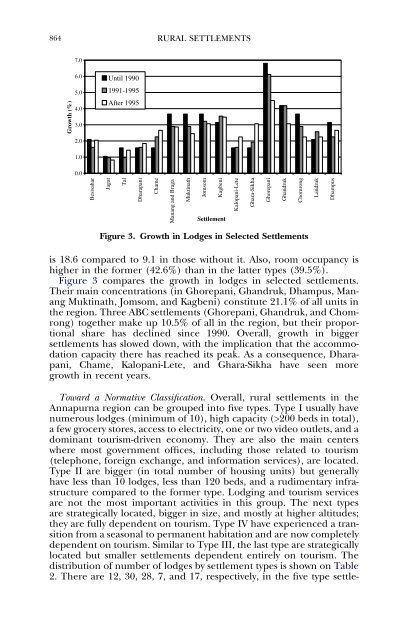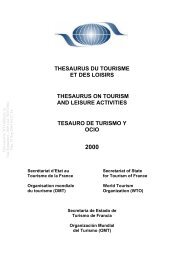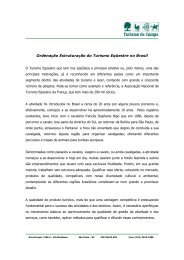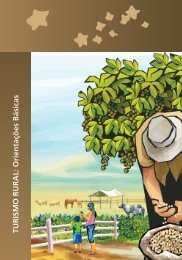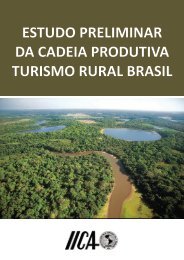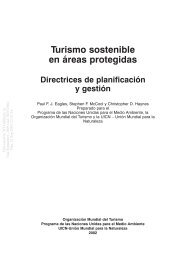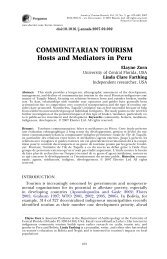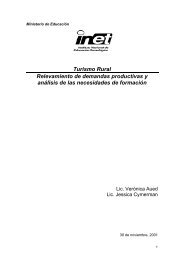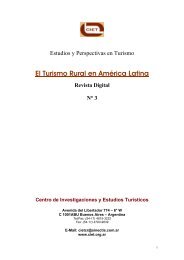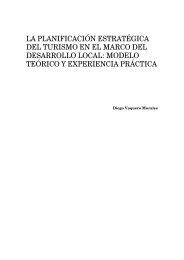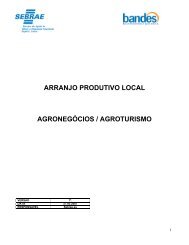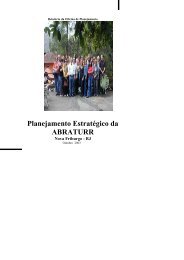TOURISM AND RURAL SETTLEMENTS Nepal's ... - ResearchGate
TOURISM AND RURAL SETTLEMENTS Nepal's ... - ResearchGate
TOURISM AND RURAL SETTLEMENTS Nepal's ... - ResearchGate
Create successful ePaper yourself
Turn your PDF publications into a flip-book with our unique Google optimized e-Paper software.
864 <strong>RURAL</strong> <strong>SETTLEMENTS</strong><br />
7.0<br />
Growth (%)<br />
6.0<br />
5.0<br />
4.0<br />
3.0<br />
Until 1990<br />
1991-1995<br />
After 1995<br />
2.0<br />
1.0<br />
0.0<br />
Besisahar<br />
Jagat<br />
Tal<br />
Dharapani<br />
Chame<br />
Manang and Braga<br />
Muktinath<br />
Jomsom<br />
Kagbeni<br />
Settlement<br />
Kalopani-Lete<br />
Ghara-Sikha<br />
Ghorepani<br />
Ghandruk<br />
Chomrong<br />
Landruk<br />
Dhampus<br />
Figure 3. Growth in Lodges in Selected Settlements<br />
is 18.6 compared to 9.1 in those without it. Also, room occupancy is<br />
higher in the former (42.6%) than in the latter types (39.5%).<br />
Figure 3 compares the growth in lodges in selected settlements.<br />
Their main concentrations (in Ghorepani, Ghandruk, Dhampus, Manang<br />
Muktinath, Jomsom, and Kagbeni) constitute 21.1% of all units in<br />
the region. Three ABC settlements (Ghorepani, Ghandruk, and Chomrong)<br />
together make up 10.5% of all in the region, but their proportional<br />
share has declined since 1990. Overall, growth in bigger<br />
settlements has slowed down, with the implication that the accommodation<br />
capacity there has reached its peak. As a consequence, Dharapani,<br />
Chame, Kalopani-Lete, and Ghara-Sikha have seen more<br />
growth in recent years.<br />
Toward a Normative Classification. Overall, rural settlements in the<br />
Annapurna region can be grouped into five types. Type I usually have<br />
numerous lodges (minimum of 10), high capacity (>200 beds in total),<br />
a few grocery stores, access to electricity, one or two video outlets, and a<br />
dominant tourism-driven economy. They are also the main centers<br />
where most government offices, including those related to tourism<br />
(telephone, foreign exchange, and information services), are located.<br />
Type II are bigger (in total number of housing units) but generally<br />
have less than 10 lodges, less than 120 beds, and a rudimentary infrastructure<br />
compared to the former type. Lodging and tourism services<br />
are not the most important activities in this group. The next types<br />
are strategically located, bigger in size, and mostly at higher altitudes;<br />
they are fully dependent on tourism. Type IV have experienced a transition<br />
from a seasonal to permanent habitation and are now completely<br />
dependent on tourism. Similar to Type III, the last type are strategically<br />
located but smaller settlements dependent entirely on tourism. The<br />
distribution of number of lodges by settlement types is shown on Table<br />
2. There are 12, 30, 28, 7, and 17, respectively, in the five type settle-


